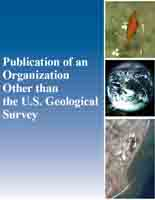Mixed natal origins present management challenges for a non-native fish established throughout a modified river network
Links
- More information: Publisher Index Page (via DOI)
- Download citation as: RIS | Dublin Core
Abstract
Expansion of non-native brown trout (Salmo trutta) in the Colorado River below Glen Canyon Dam motivated reevaluation of suppression strategies to minimize potential impacts to native fishes in the Grand Canyon, Arizona, USA. Brown trout are one of several non-native fish species of management concern in this river reach, and understanding their natal sources and movement patterns may assist managers in planning suppression strategies. We identified trace elements in brown trout otoliths, which, when coupled with location-specific water chemistry data, identified brown trout natal origins over 19 years. Strontium and manganese concentrations revealed distinct emigration patterns from natal tributary streams and the mainstem Colorado River over two periods. Adult brown trout collected from throughout our study area showed mixed tributary and mainstem natal origins, which persisted during suppression efforts in a known spawning tributary. Unexpectedly, we found evidence of brown trout reproduction in the Colorado River for at least a decade before documentation through field monitoring. Our findings may inform but complicate the development of management strategies for system-wide brown trout suppression.
Study Area
| Publication type | Article |
|---|---|
| Publication Subtype | Journal Article |
| Title | Mixed natal origins present management challenges for a non-native fish established throughout a modified river network |
| Series title | Canadian Journal of Fisheries and Aquatic Sciences |
| DOI | 10.1139/cjfas-2024-0267 |
| Volume | 82 |
| Year Published | 2025 |
| Language | English |
| Publisher | Canadian Science Publishing |
| Contributing office(s) | Southwest Biological Science Center |
| Description | 13 p. |
| First page | 1 |
| Last page | 13 |
| Country | United States |
| State | Arizona |
| Other Geospatial | Colorado River |


